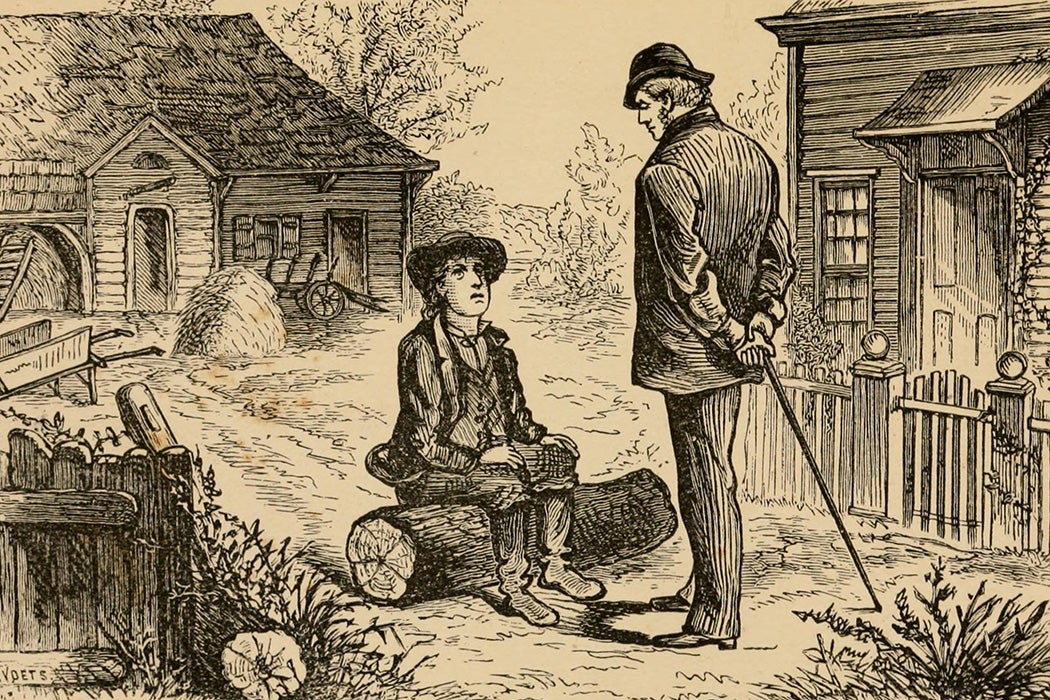A “Horatio Alger story” is supposed to be a rags-to-riches narrative: Poor boy becomes titan of industry through honest hard work. In an influential, ground-breaking essay, scholar Michael Moon shows that this isn’t actually the tale that Horatio Alger, Jr. (1832–99) wrote, rewrote, and retailed successfully for years during the Gilded Age.
Alger’s numerous books are actually about gaining petty-bourgeois respectability, not great wealth. They are about poor street kids, but they show that the way to respectability isn’t pluck and drive. It’s luck and patronage.
It wasn’t till after Alger’s death that his books took off in cheap reprints—trimmed of “substantial amounts of their didactic moralizing,” according to Moon. The period between the turn of the century and World War I was when “a Horatio Alger story” became the preferred name for what Moon calls a “male-capitalist Cinderella tale.”
With one exception, Alger’s heroes are boys who are chosen by rich white male patrons who see something special in them and raise them out of the mire. As Moon explains of Alger’s formulaic plot lines, “any boy who is reasonably willing to please his potential employers can attain a life of modest comfort” in the expanding white-collar sector of the Gilded Age. This is “a rich man’s fantasy of benevolence and philanthropy.” Alger’s works perpetuate “corporate/capitalist America’s long-cherished myth”: that elite white men “have their eye out for that exceptional, ‘deserving,’ ‘attractive’ underclass youth.”
According to Moon, this message is also a way to disguise the “male homoerotic foundations” of the capitalist ethos. The “corporate/capitalist culture’s need for a serviceable myth of ‘success'” utterly represses Alger’s own take on “particular, exclusive modes of relationships between males”—such as poor boy and rich patron.
It wouldn’t be publicly known until the 1970s that Alger was thrown out of a Protestant ministry in Boston in 1866 for pederasty. Alger tried to avoid scandal by leaving town. He moved to New York and remade himself into a phenomenally prolific author and was associated with the “boy charities” of the day.
Weekly Newsletter
Alger, in other words, “is known to have seduced boys sexually during at least one period of his career as well as to have actively participated in the reform movement to ‘seduce’ New York street boys away from their milieu into an at least minimally genteel way of life.”
Between 1900 and World War I, as the Progressive movement, suffragists, and organizing workers threatened the capitalist system, Horatio Alger stories became interpreted as “rags to riches” stories—a kind of booster shot of bootstrap capitalism.
Support JSTOR Daily! Join our new membership program on Patreon today.







